-
 Bitcoin
Bitcoin $118000
0.67% -
 Ethereum
Ethereum $3750
0.71% -
 XRP
XRP $3.183
1.61% -
 Tether USDt
Tether USDt $1.000
-0.01% -
 BNB
BNB $788.1
1.21% -
 Solana
Solana $186.0
0.85% -
 USDC
USDC $0.9999
-0.02% -
 Dogecoin
Dogecoin $0.2373
1.25% -
 TRON
TRON $0.3204
1.76% -
 Cardano
Cardano $0.8266
1.85% -
 Hyperliquid
Hyperliquid $44.04
1.28% -
 Sui
Sui $4.192
5.88% -
 Stellar
Stellar $0.4399
2.63% -
 Chainlink
Chainlink $18.40
1.19% -
 Hedera
Hedera $0.2842
9.06% -
 Bitcoin Cash
Bitcoin Cash $560.5
2.46% -
 Avalanche
Avalanche $24.99
4.58% -
 Litecoin
Litecoin $114.5
1.25% -
 UNUS SED LEO
UNUS SED LEO $8.980
-0.03% -
 Shiba Inu
Shiba Inu $0.00001406
0.53% -
 Toncoin
Toncoin $3.306
4.27% -
 Ethena USDe
Ethena USDe $1.001
0.03% -
 Polkadot
Polkadot $4.169
2.37% -
 Uniswap
Uniswap $10.56
1.95% -
 Monero
Monero $322.8
1.06% -
 Dai
Dai $0.0000
0.00% -
 Bitget Token
Bitget Token $4.545
0.12% -
 Pepe
Pepe $0.00001261
1.29% -
 Aave
Aave $296.5
1.27% -
 Cronos
Cronos $0.1379
5.90%
How to use the historical percentile of BOLL bandwidth? Statistical extreme values to determine turning points
Using historical percentile of Bollinger Bandwidth helps identify extreme volatility, signaling potential turning points in the crypto market, enhancing trading strategies.
Jun 09, 2025 at 05:28 pm
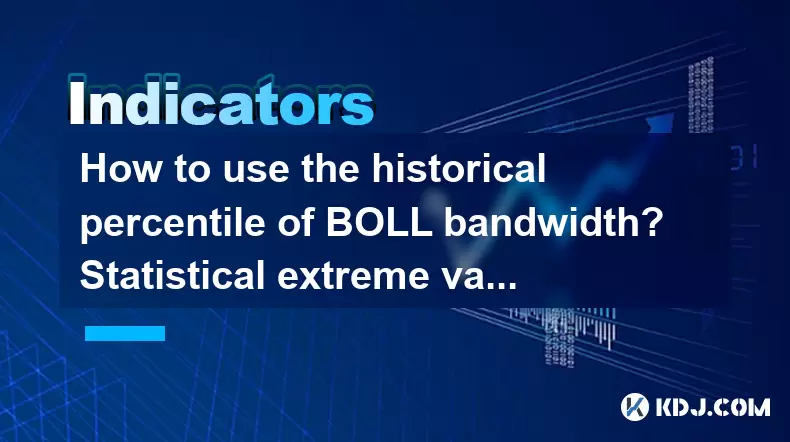
The Bollinger Bands (BOLL) are a popular technical analysis tool used in the cryptocurrency market to assess volatility and potential price turning points. One advanced method to enhance the use of Bollinger Bands is by analyzing the historical percentile of the Bollinger Bandwidth. This approach can help traders identify statistical extreme values, which can be pivotal in determining market turning points. In this article, we will explore how to use the historical percentile of Bollinger Bandwidth and how it can be applied to find potential turning points in the crypto market.
Understanding Bollinger Bands and Bandwidth
Bollinger Bands consist of a middle band being a simple moving average (SMA), typically set at 20 periods, with an upper and lower band that are standard deviations away from the SMA. The standard deviation is usually set to 2. The Bollinger Bandwidth is the width between the upper and lower bands, calculated as:
[ \text{Bandwidth} = \frac{\text{Upper Band} - \text{Lower Band}}{\text{Middle Band}} ]
The bandwidth provides an indication of market volatility. A narrow bandwidth suggests low volatility, while a wide bandwidth indicates high volatility.
Calculating Historical Percentile of Bollinger Bandwidth
To calculate the historical percentile of Bollinger Bandwidth, you need to gather historical data for the bandwidth over a significant period. Here's how you can do it:
- Collect Data: Gather the daily Bollinger Bandwidth values over a chosen historical period, such as the past year.
- Sort Data: Arrange the bandwidth values in ascending order.
- Determine Percentile: For any given bandwidth value, calculate its percentile by finding its position in the sorted list. The formula for percentile is:
[ \text{Percentile} = \left( \frac{\text{Number of Values Below Given Value}}{\text{Total Number of Values}} \right) \times 100 ]
Identifying Statistical Extreme Values
Statistical extreme values occur when the current Bollinger Bandwidth reaches the upper or lower percentiles of its historical distribution. These extremes can signal potential turning points in the market.
- Upper Percentile Extremes: If the current bandwidth is in the 90th percentile or higher, it indicates extremely high volatility. This might suggest that the market is overextended and a reversal could be imminent.
- Lower Percentile Extremes: If the current bandwidth is in the 10th percentile or lower, it signifies extremely low volatility. This could mean that a significant price move is brewing, as periods of low volatility often precede major breakouts.
Applying Historical Percentile to Determine Turning Points
To use the historical percentile of Bollinger Bandwidth for determining turning points, follow these steps:
- Monitor Current Bandwidth: Calculate the current Bollinger Bandwidth using the latest market data.
- Compare to Historical Percentiles: Determine the historical percentile of the current bandwidth value.
- Analyze Extremes: Look for instances where the bandwidth reaches extreme percentiles (e.g., above 90th or below 10th). These are potential signals for turning points.
- Confirm with Other Indicators: Use additional technical indicators, such as RSI or MACD, to confirm potential turning points suggested by the bandwidth extremes.
Practical Example in the Cryptocurrency Market
Let's consider a practical example using Bitcoin (BTC) to illustrate the use of historical percentile of Bollinger Bandwidth.
- Data Collection: Collect daily Bollinger Bandwidth values for BTC over the past year.
- Calculation: Calculate the historical percentile of the current bandwidth. Assume the current bandwidth is 0.05 and the 10th percentile of historical bandwidth is 0.04.
- Analysis: Since the current bandwidth is just above the 10th percentile, it indicates extremely low volatility. This suggests that a significant price move might be on the horizon.
- Confirmation: Check other indicators like RSI. If RSI is also showing divergence or other signs of an impending move, it strengthens the case for a potential turning point.
Implementing the Strategy in Trading Platforms
To implement this strategy in a trading platform, follow these steps:
- Choose a Platform: Select a trading platform that supports custom indicators and scripting, such as TradingView or MetaTrader.
- Write the Script: Create a custom script to calculate Bollinger Bands, Bandwidth, and historical percentiles. Here’s a basic outline of how to do it in TradingView’s Pine Script:
//@version=4
study("Bollinger Bandwidth Percentile", overlay=false)length = input(20, minval=1, title="BB Length")
mult = input(2.0, minval=0.1, title="BB Mult")
src = close
basis = sma(src, length)
dev = mult * stdev(src, length)
upper = basis + dev
lower = basis - dev
bandwidth = (upper - lower) / basis
// Historical Percentile Calculation
var float[] bandwidthHistory = array.new_float(0)
array.push(bandwidthHistory, bandwidth)
if array.size(bandwidthHistory) > 365 // Assuming 1 year of data
array.shift(bandwidthHistory)
sortedBandwidth = array.sort(bandwidthHistory)
currentIndex = array.indexof(sortedBandwidth, bandwidth)
percentile = (currentIndex / array.size(sortedBandwidth)) * 100
plot(bandwidth, title="Bandwidth", color=color.blue)
plot(percentile, title="Percentile", color=color.red)
- Set Alerts: Configure alerts to notify you when the bandwidth reaches extreme percentiles.
- Review and Adjust: Regularly review the strategy’s performance and adjust parameters as needed.
Integrating with Other Technical Analysis Tools
While the historical percentile of Bollinger Bandwidth is a powerful tool, it should be used in conjunction with other technical analysis tools for better accuracy. Here are some complementary tools:
- Relative Strength Index (RSI): RSI can help confirm overbought or oversold conditions that align with bandwidth extremes.
- Moving Average Convergence Divergence (MACD): MACD can signal momentum shifts that might coincide with turning points suggested by bandwidth percentiles.
- Volume Analysis: High volume during periods of extreme bandwidth can confirm the significance of potential turning points.
FAQs
Q1: How often should I recalculate the historical percentile of Bollinger Bandwidth?
A1: It is advisable to recalculate the historical percentile daily to keep your analysis up-to-date with the latest market conditions. However, for longer-term analysis, weekly or monthly recalculations may suffice.
Q2: Can the historical percentile of Bollinger Bandwidth be used for all cryptocurrencies?
A2: Yes, the methodology can be applied to any cryptocurrency that has sufficient historical data. However, the effectiveness may vary depending on the liquidity and volatility of the specific cryptocurrency.
Q3: What other factors should I consider when using Bollinger Bandwidth percentiles?
A3: Consider market sentiment, news events, and broader economic indicators, as these can significantly impact cryptocurrency prices and may influence the accuracy of your analysis.
Q4: Is it necessary to use a specific time frame for the Bollinger Bands when calculating bandwidth percentiles?
A4: The choice of time frame depends on your trading strategy. Shorter time frames (e.g., 20-day) are suitable for short-term trading, while longer time frames (e.g., 50-day or 200-day) may be better for long-term analysis. Experiment with different time frames to find what works best for your approach.
Disclaimer:info@kdj.com
The information provided is not trading advice. kdj.com does not assume any responsibility for any investments made based on the information provided in this article. Cryptocurrencies are highly volatile and it is highly recommended that you invest with caution after thorough research!
If you believe that the content used on this website infringes your copyright, please contact us immediately (info@kdj.com) and we will delete it promptly.
- Solana, Staking, and Unilabs: What's the Buzz in the Crypto Space?
- 2025-07-27 16:50:13
- Altcoins with 1000x Potential: Riding the Bull Run Wave
- 2025-07-27 16:30:12
- AI, Crypto Coins, and E-Commerce: A New York State of Mind on the Future of Digital Transactions
- 2025-07-27 16:30:12
- Quantum Leap: How Bitcoin, Quantum Solutions, and $350M Are Shaking Up Corporate Finance
- 2025-07-27 14:30:12
- Arctic Pablo Coin: Your Icy Treasure Hunt for Mega Returns and Investment?
- 2025-07-27 15:10:12
- Meme Coins in 2025: Investment Strategies & Crypto Trends
- 2025-07-27 14:30:12
Related knowledge
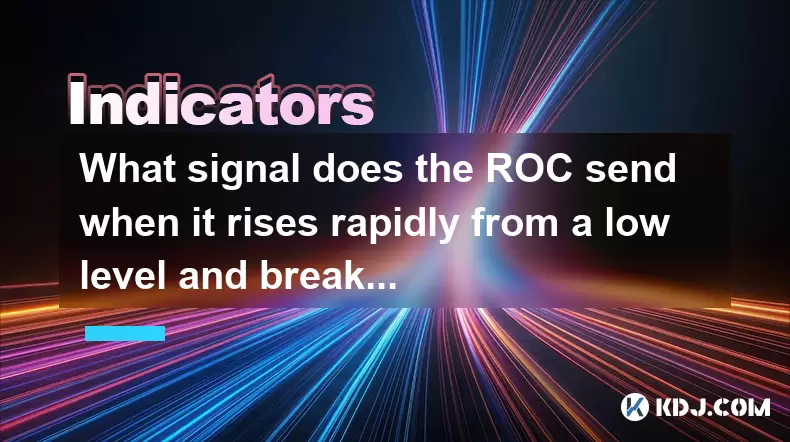
What signal does the ROC send when it rises rapidly from a low level and breaks through the zero axis?
Jul 27,2025 at 10:15am
Understanding the Rate of Change (ROC) IndicatorThe Rate of Change (ROC) is a momentum-based oscillator used in technical analysis to measure the perc...
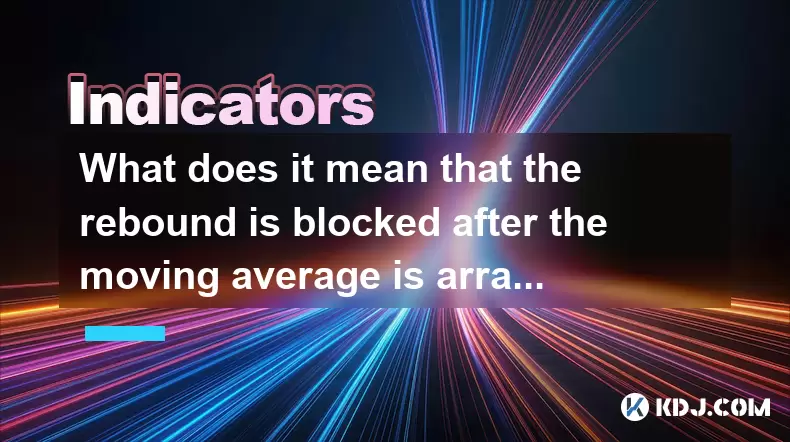
What does it mean that the rebound is blocked after the moving average is arranged in a short position for the first time?
Jul 26,2025 at 10:51am
Understanding the Short-Term Moving Average ConfigurationWhen traders refer to a 'short position arrangement' in moving averages, they are describing ...
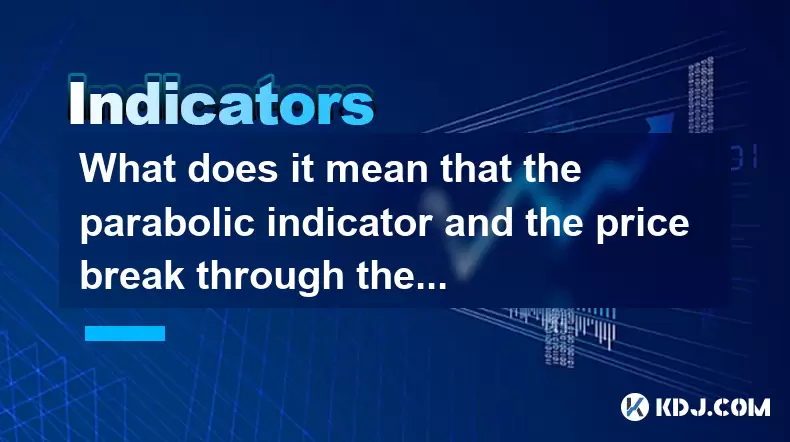
What does it mean that the parabolic indicator and the price break through the previous high at the same time?
Jul 26,2025 at 07:22pm
Understanding the Parabolic Indicator (SAR)The Parabolic SAR (Stop and Reverse) is a technical analysis tool developed by J. Welles Wilder to identify...
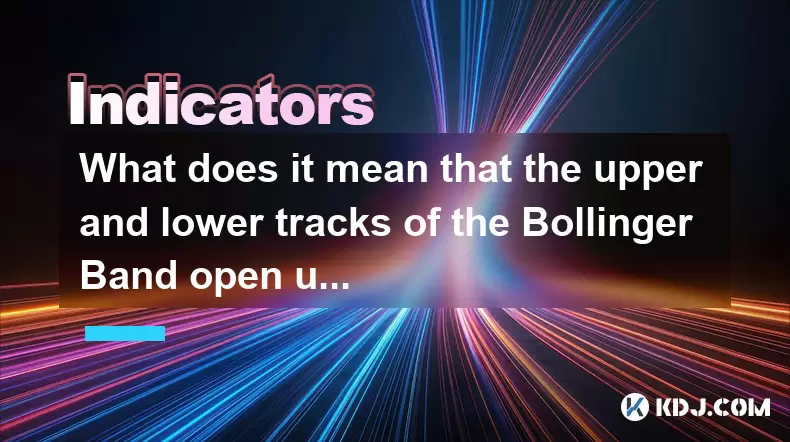
What does it mean that the upper and lower tracks of the Bollinger Band open upward at the same time?
Jul 27,2025 at 02:49pm
Understanding the Bollinger Band StructureThe Bollinger Band is a widely used technical analysis tool developed by John Bollinger. It consists of thre...
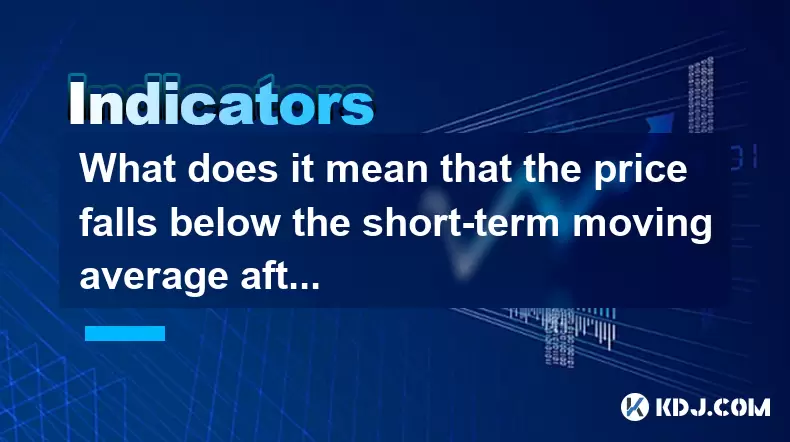
What does it mean that the price falls below the short-term moving average after the RSI top divergence?
Jul 26,2025 at 11:01pm
Understanding RSI Top Divergence in Cryptocurrency TradingThe Relative Strength Index (RSI) is a momentum oscillator widely used in cryptocurrency tra...
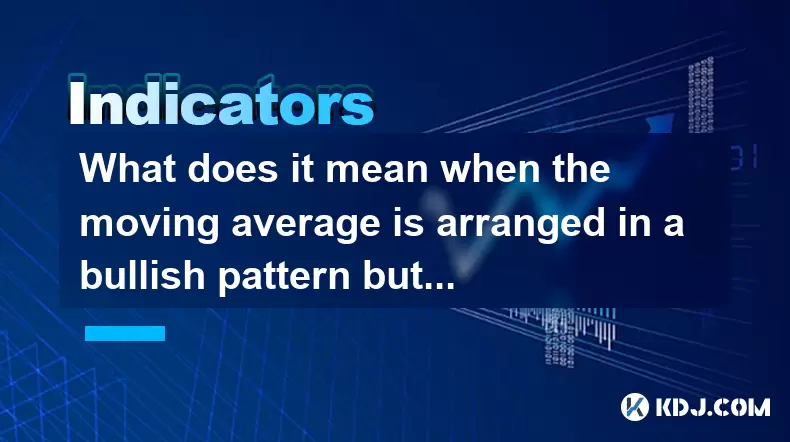
What does it mean when the moving average is arranged in a bullish pattern but the MACD bar is shortened?
Jul 27,2025 at 06:07am
Understanding the Bullish Moving Average PatternWhen traders observe a bullish moving average pattern, they typically refer to a configuration where s...

What signal does the ROC send when it rises rapidly from a low level and breaks through the zero axis?
Jul 27,2025 at 10:15am
Understanding the Rate of Change (ROC) IndicatorThe Rate of Change (ROC) is a momentum-based oscillator used in technical analysis to measure the perc...

What does it mean that the rebound is blocked after the moving average is arranged in a short position for the first time?
Jul 26,2025 at 10:51am
Understanding the Short-Term Moving Average ConfigurationWhen traders refer to a 'short position arrangement' in moving averages, they are describing ...

What does it mean that the parabolic indicator and the price break through the previous high at the same time?
Jul 26,2025 at 07:22pm
Understanding the Parabolic Indicator (SAR)The Parabolic SAR (Stop and Reverse) is a technical analysis tool developed by J. Welles Wilder to identify...

What does it mean that the upper and lower tracks of the Bollinger Band open upward at the same time?
Jul 27,2025 at 02:49pm
Understanding the Bollinger Band StructureThe Bollinger Band is a widely used technical analysis tool developed by John Bollinger. It consists of thre...

What does it mean that the price falls below the short-term moving average after the RSI top divergence?
Jul 26,2025 at 11:01pm
Understanding RSI Top Divergence in Cryptocurrency TradingThe Relative Strength Index (RSI) is a momentum oscillator widely used in cryptocurrency tra...

What does it mean when the moving average is arranged in a bullish pattern but the MACD bar is shortened?
Jul 27,2025 at 06:07am
Understanding the Bullish Moving Average PatternWhen traders observe a bullish moving average pattern, they typically refer to a configuration where s...
See all articles

























































































